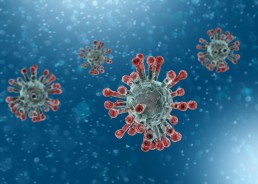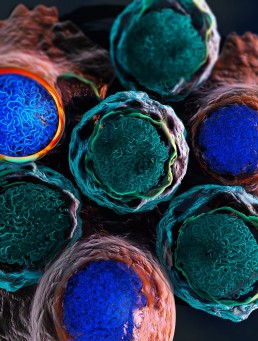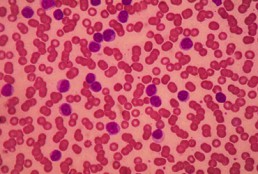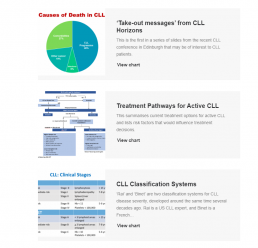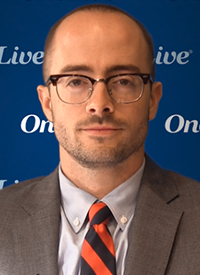Coronavirus: how to self-isolate
Coronavirus: how to self-isolate
What to do if you have symptoms of Covid-19, have travelled to a badly affected area, or have been in contact with someone who has the disease.
1. Stay at home
This may sound obvious, but don’t leave home except to get medical care (and if you do, make sure you have called ahead). Say no to visitors. Contact friends and family online or by phone. If you use online shopping for deliveries of food, medicine or other necessities, make sure delivery instructions say that items should be left outside, not handed over in person. If you ask friends or family for help bringing you supplies, get them to do the same.
2. Separate yourself from others
Stay in one room, with the door closed – ideally a room that has a window to the outside that you can open. Don’t share crockery, cutlery, glasses, bedding or towels with anyone in your home when you have used them. Dishwashers can be used to clean crockery and cutlery. If that isn’t possible, wash by hand and dry using a separate tea towel. Laundry, bedding and towels should be placed in a plastic bag and washed only when tests for Covid-19 are negative or self-isolation is over, if possible. Do not take anything to a launderette. If you have to wash at home, use temperatures of at least 60C.
3. Food and bathrooms
Have meals left outside your door. If you cook for yourself, do so, if possible, when others are not in the kitchen – and take food back to your room to eat. If you have more than one bathroom in your home, use a separate one. If you have to share, ensure you clean it thoroughly and regularly. If you live in shared accommodation (such as university halls of residence), leave your room only when necessary, ideally wearing a mask, if you have one. Try to avoid using the kitchen or bathroom while others are there.
4. Keep away from pets if possible
Wash your hands before and after contact as a precautionary measure.
5. Safely dispose of tissues after you cough or sneeze
Dispose of them into a plastic bag and immediately wash your hands with soap and water, and dry thoroughly. If you have one, wear a mask when you are in the same room as others, or if you go out for medical treatment.
6. Hand washing
The rules are similar to those for all people – wash your hands often and thoroughly, using soap and water, for 20 seconds Then rinse and dry thoroughly. Avoid touching your eyes, nose and mouth with unwashed hands.
7. Waste disposal
All waste that you have been in contact with, including used tissues and masks, should be put in a plastic rubbish bag and tied when full. The plastic bag should then be placed in a second bin bag and tied. Do not dispose of it or put it out for collection until you have test results, or until quarantine is over. If you test positive, you will get instructions on how to dispose of the waste.
8. If symptoms worsen
Seek medical help quickly if you develop new symptoms or if your symptoms worsen (for example, if you have problems breathing).
COVID-19 and CLL
COVID-19 and CLL
This article was originally published on CLL Society
We are receiving many requests to suggest any special precautions for us, CLL patients, in response to the spreading risk of coronavirus (COVID-19).
First, this is an evolving situation with more unknowns than knowns at the present time.
Second, it does appear that those over 60 years old are at increased risk for a more serious infection. That would include many of us CLL-ers.
Next, those who are immune suppressed (and all CLL patients, whether treated or not, are immune suppressed) are at a higher risk for serious disease, but perhaps there is less of an increased risk for us than for those with heart or lung conditions. There is almost no data out there to provide clarity on this important issue.
There is also no clarity as to whether we are at higher risk to acquire the infection, only that we are more likely to have a rough time if we do get it. So far it does not appear that we are at higher risk to become infected, but again there is just too little information to be certain at this time.
The prudent course of action is to follow the CDC and WHO guidelines that, besides hand washing, elbow bumps, avoid touching your eyes, nose, and mouth, cleaning and disinfecting frequently touched objects and surfaces, and more, now the CDC advises high risk folks like us to avoid travel and crowds. This was a change as of March 5, 2020.
In a proactive and cautionary move, the CLL Society canceled all Support Group meetings and Patient Educational Forums scheduled for March. Soon after announcing this, LLS and LRF canceled meetings as well.
For general information from the CDC, please see: https://www.cdc.gov/coronavirus/2019-ncov/about/index.html and for high-risk populations, including CLL patients, see: https://www.cdc.gov/coronavirus/2019-ncov/specific-groups/high-risk-complications.htmlI myself have canceled 2 trips for CLL-related education this month.
The CLL Society is closely monitoring the COVID-19 outbreak and will provide updates through the website, and will, when appropriate, through our email list, as soon as more information becomes available. Rather than sending individual emails with your questions, please sign up for our Alerts and check the website for the latest COVID-19 news.
30 tips for living well with CLL (an update of "Coping Strategies" and "Things we can do...")
30 tips for living well with CLL (an update of "Coping Strategies" and "Things we can do...")
This is a collection of practical tips gathered from this forum over the years, to help us live better with CLL. I’ve added some personal comments, saying how I myself have taken on board some of these suggestions.
Single-cell sequencing of CLL therapy: Shared genetic program, patient-specific execution
Single-cell sequencing of CLL therapy: Shared genetic program, patient-specific execution
Chronic lymphocytic leukemia (CLL) is the most common form of blood cancer (leukemia) in the Western world, affecting approximately 1.2% of all cancer patients. This type of cancer starts with the lymphocytes (a type of white blood cells) that are produced in the bone marrow. CLL is characterized by the proliferation of abnormal lymphocytes (B cells) that fail to mature and grow out of control. These abnormal cells accumulate in the bone marrow and lymph nodes, taking the place of other healthy cell types and impeding their normal development. Finding the most suitable therapy for each patient poses a challenge due to the clinical and molecular heterogeneity of this disease, with some patients facing slow disease progression, whereas others face rapid progression and require quick medical response.
The cancer drug ibrutinib, a Bruton tyrosine kinase (BTK) inhibitor, has remarkable efficacy in most patients with CLL. It is becoming the standard of care for most patients requiring treatment due to its clinical efficacy and mostly tolerable side effects. However, it does not cure the disease, and patients must undergo prolonged periods of treatment. Christoph Bock and his group at CeMM investigated the molecular program with which CLL cells and other immune cells response to ibrutinib treatment in patients with CLL. Their goal was to learn the epigenetic and transcriptional patterns that predict how swiftly the treatment is having an effect on the CLL cells and how long it takes for the disease to respond in each individual patient.
More Specific BTK Inhibitor Shows High Relative Rates of Response in CLL
More Specific BTK Inhibitor Shows High Relative Rates of Response in CLL
In a phase 3 trial, acalabrutinib, a second-generation Bruton’s tyrosine kinase (BTK), provided a progression-free survival (PFS) advantage over a chemotherapy-containing standard in frontline treatment of chronic lymphocytic leukemia (CLL).
In the three-arm study, called ELEVATE TN, acalabrutinib (Calquence, AstraZeneca) alone and in combination with obinutuzumab (Gazyva, Genentech) was found to be significantly more effective than chlorambucil plus obinutuzumab for the primary PFS end point, reported investigator Jeff P. Sharman, MD, at the 2019 annual meeting of the American Society of Hematology (ASH, abstract 31). Dr. Sharman, the director of research at Willamette Valley Cancer Institute, in Eugene, Ore also noted that a trend toward an overall survival (OS) benefit appeared to be emerging for the acalabrutinib combination.
Slides from Edinburgh
Slides form Edinburgh
Why are Online Communities a Good Idea?
- A new diagnosis can be a scary, and lonely, time.
- Online communities like CLLANZ, HealthUnlocked, and Patient Power are helping people come together, and cope with complex chronic illnesses such as CLL.
- The patients’ shared experiences and knowledge of their condition, hospitals, healthcare services and drugs is leading to improvements in patient care, both by themselves, and by their carers, and their doctors.
- Knowledgeable patients become their own advocates and ask questions of their doctor, forming a partnership approach.
Chronic Lymphocytic Leukaemia
- Most common adult leukaemia
- Most patients are older than 65
- Cancer of the immune system affecting B-cells
- Can present with a weak immune system
- Each patient’s CLL is different
- Most patients will, often initially, not require treatment. Watch and wait (and worry)
- Most new therapies have improved the prognosis of CLL, but it still remains a chronic condition that can only rarely be cured
Initial Workup of CLL Patients
- All patients at diagnosis
-Flow cytometry (via blood and / or bone marrow) to confirm CLL diagnosis
- Informative for prognosis and / or therapy determination
-Del17p, and del11q. These portend for more aggressive disease
-Mutated / unmutated VH gene status assessment (not yet available in New Zealand).
-No CT scan unless symptoms are present: PET scan can be helpful if Richter’s suspected
- Bone marrow biopsy and aspirate not necessary in absence of cytopenias
Ibrutinib and Venetoclax Combo ‘Impressive’ in Front-Line CLL
Ibrutinib and Venetoclax Combo ‘Impressive’ in Front-Line CLL
The combination of two targeted therapies — ibrutinib (Imbruvika, Pharmacyclics/Janssen) and venetoclax (Venclexta, AbbVie) – has shown impressive results in the front-line treatment of chronic lymphocytic leukemia (CLL).
To read the full story visit Medscape
RIP Clive James
RIP Clive James
Clive James, the Australian wit, broadcaster and poet died last Sunday at the age of 80, ten years after being diagnosed with CLL.
He wrote the best — the only? – poem about chemotherapy, specifically about Ibrutinib. the wonder drug that helped keep him and many thousands of others alive for a lot longer than expected. Here it is:
Ibrutinib
The Marvel Comic name should tip you off
That this new drug is heavy duty stuff.
You don’t get this one just to cure a cough.
A chemo pill, and powerful enough
To put the kibosh on your CLL,
It gets in there and gives the bastard hell.
Five years’ remission and the beast is back.
It’s in your bones the way the Viet Cong
Poured through their tunnels to the Tet attack,
And what comes next might not last very long.
But let’s see what Ibrutinib can do
To win the war whose battlefield is you.
Ibrutinib, you little cluster-bomb
Of goodness, get in there and do your thing!
All that the bad guys seek is martyrdom:
Their own demise is the death they bring.
They work in cells. There is no high command.
We let you in and then it’s hand to hand.
Should you prevail, we promise you a role
From here on until the natural end.
Just beat them back and it will be a stroll,
Unless you don’t, in which case things might tend
To go bananas in a serious way.
But not yet. Down the hatch. This is today.
***
Inspirational stuff — and Ibrutinib really is a remarkable drug, a pill rather poisonous goo, showing the way to targeted treatment of leukaemias and other cancers. Only Clive James could make it sound so poetic!
Most anticipated studies on chronic lymphocytic leukemia at ASH
Most anticipated studies on chronic lymphocytic leukemia at ASH
This article was originally published on Healio
In this Guest Commentary, Ryan W. Jacobs, MD, principal investigator of clinical trials for chronic lymphocytic leukemia at Atrium Health’s Levine Cancer Institute, reviews studies on CLL that will be presented at the ASH Annual Meeting and Exposition. The most anticipated trials will reveal new information on BTK plus BCL-2 inhibition, updates on major clinical trials — including the CLL14 and MURANO trials — early data on CAR T-cell therapy, and more.
There are a lot of studies updating us on new treatment options for CLL, which is not surprising given how rapidly the field has been progressing. Essentially all the major newer drugs being used to treat CLL have some significant updates. There is also a lot to be excited about regarding where the field may be progressing to in terms of chemotherapy-free small molecule inhibitor combinations that are administered over a defined timeline, produce deep remissions and are well tolerated. This will be a review of the notable oral presentations in CLL.
BTK plus BCL-2 inhibition
There has been evidence and recognition for a while now that using both BTK and BCL-2 inhibition together makes sense in terms of complimentary mechanisms of action, the potential to reduce possible mechanisms of resistance, and how well these drugs treat disease in different sanctuaries of the body. For example, ibrutinib (Imbruvica; Pharmacyclics, Janssen), a BTK inhibitor, targets disease well in the enlarged lymph nodes and spleen. Venetoclax (Venclexta; AbbVie, Genentech) is really good at clearing out the circulating disease quite rapidly.
There are five noteworthy oral presentations evaluating the combination of BCL-2 inhibition and BTK inhibition. The most significant in terms of the number of patients on the trial and the length of follow up is the phase 2 CAPTIVATE study (Tam CS, et al. Abstract 35), which looked at the combination of ibrutinib plus venetoclax for 1 year after a 3-month lead-in with ibrutinib (I acknowledge I may be biased as I am a contributing author). The study enrolled 164 patients aged younger than 70 years, which is more than double the number of patients compared with the other oral presentations that are investigating this combination. CAPTIVATE is also unique in that it is not restricted to high-risk patients, which one of the other trials specifically focuses on. This trial looked at MRD negativity in both the peripheral blood and the bone marrow at the end of 1-year combined therapy. That is the information that is going to be reported because the median follow up is only 14.7 months so far, which is not long enough to fully analyze PFS data. The combination seems to be very effective — close to a 100% overall response rate. At the 1-year mark of combined therapy, the highest reported rates of bone marrow MRD negativity was 71%. The concordance rate between MRD negativity and peripheral blood was very high at 93%. This means that most of the patients who were MRD negative in the blood were also MRD negative in the bone marrow.

